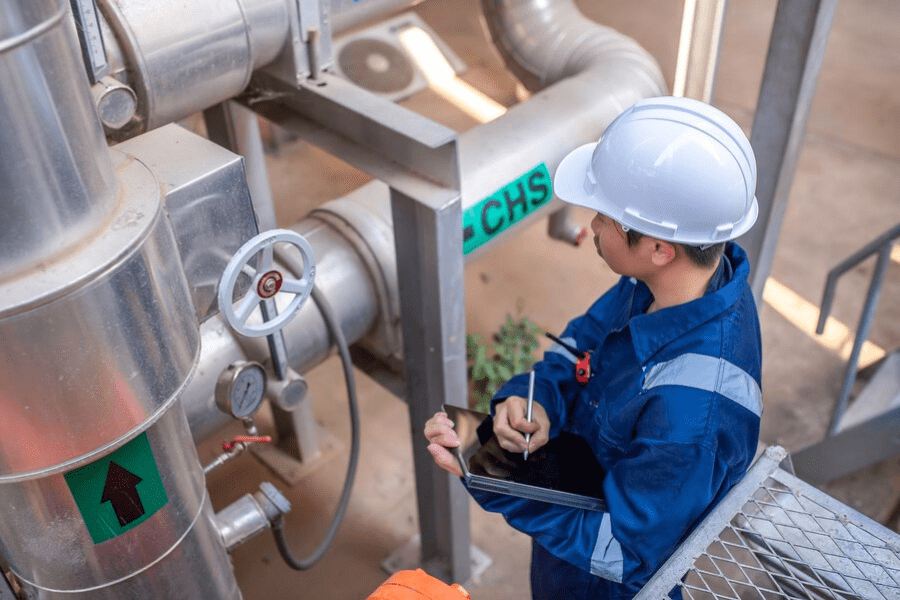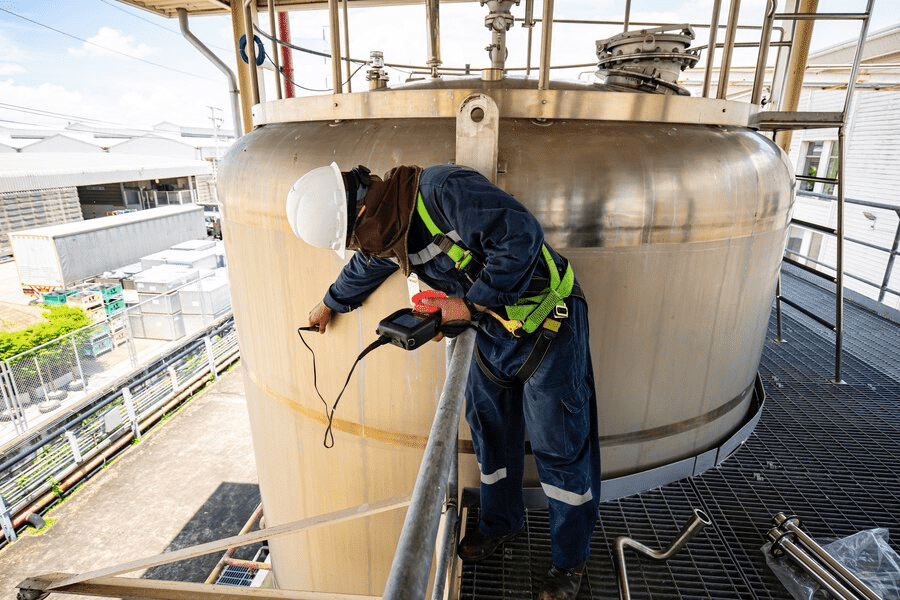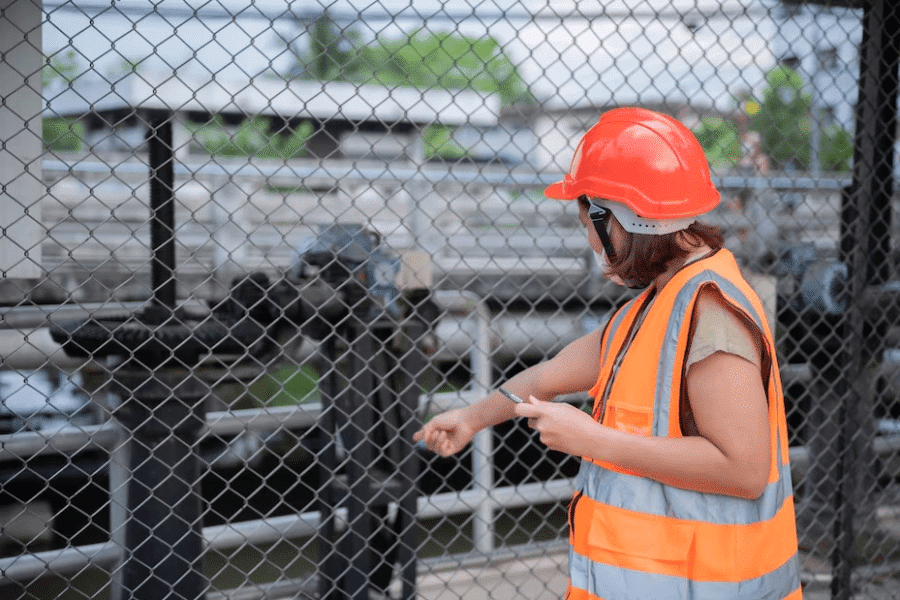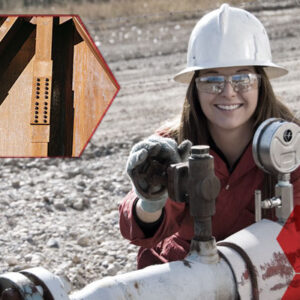Introduction

Definition and Significance of Cathodic Protection
Cathodic protection (CP) is a technique used to control the corrosion of metal surfaces in structures and infrastructure by making the metal surface the cathode of an electrochemical cell. Corrosion is a natural process that occurs when metal is exposed to elements like moisture, oxygen, and chemicals, leading to degradation and weakening of the material. Cathodic protection helps prevent or slow down this degradation by converting the entire metal surface into a cathode, which reduces the corrosion rate.
In an electrochemical sense, when a metal is exposed to a corrosive environment, it tends to undergo oxidation, releasing electrons and forming ions. The cathodic protection system supplies a sufficient amount of electrical current to the metal structure, effectively making it a cathode and preventing the oxidation process. This process significantly extends the life of the metal structure and reduces maintenance costs.
Purpose and Benefits of Implementing Cathodic Protection Systems

Corrosion Prevention and Mitigation
The primary purpose of implementing a cathodic protection system is to prevent and mitigate corrosion on metal structures. By making the structure the cathode, the system protects it from the corrosive elements in its environment, thus significantly reducing corrosion rates and preserving the integrity of the structure.
Longer Structural Lifespan
Cathodic protection systems help extend the service life of structures, such as bridges, pipelines, storage tanks, and offshore platforms, by inhibiting corrosion and degradation. This longevity translates to substantial cost savings over the lifespan of the structure as it delays the need for major repairs or replacements.
Cost-Effectiveness
Investing in a cathodic protection system is cost-effective in the long run. The initial investment for installing the system is outweighed by the savings generated from reduced maintenance, repairs, and premature replacements that would otherwise be necessary without proper corrosion control.
Environmental Impact

By minimizing corrosion and the resulting need for replacement or repair of structures, cathodic protection contributes to sustainability and environmental conservation. The production and disposal of metal materials are resource-intensive and have environmental implications. A longer lifespan for metal structures reduces the need for new metal production and associated environmental impacts.
Improved Safety
Corrosion-related structural failures can pose significant safety risks. Implementing cathodic protection helps ensure the structural integrity of critical infrastructure, enhancing overall safety for the public and reducing the risk of accidents or disasters caused by structural failure.
Fundamentals of Corrosion

Explanation of Corrosion and its Destructive Effects
Corrosion is a natural electrochemical process where a material, usually a metal, deteriorates due to a reaction with its environment. It involves the gradual degradation of the material’s properties, often leading to a decline in structural integrity, appearance, and functionality. The primary cause of corrosion is the tendency of metals to return to their more stable oxide or sulfide state.
Process of Corrosion:
Initiation: Corrosion begins with the exposure of a metal surface to an electrolyte, typically water or moisture in the air.
Formation of Corrosion Cell: The metal surface acts as the anode and cathode within the electrochemical cell. Anodic areas undergo oxidation, releasing electrons and metal ions into the electrolyte. Cathodic areas accept these electrons.
Electrochemical Reactions: At the anode, metal atoms lose electrons, forming metal ions. These ions dissolve into the electrolyte, leaving behind an oxidized surface. At the cathode, reduction reactions occur, often involving oxygen or hydrogen ions.
Corrosion Products: The metal ions from the anodic reaction combine with ions in the electrolyte to form corrosion products, which can be powdery or bulky, depending on the corrosion type.
Destructive Effects of Corrosion:

Material Weakening: Corrosion weakens the structural integrity of metals, potentially leading to failure or collapse of the affected component.
Reduced Functionality: Corroded parts may fail to perform their intended functions, impacting the overall efficiency and safety of the structure.
Economic Impact: Corrosion necessitates costly repairs, replacements, or maintenance, affecting the economic viability of structures and industries.
Environmental Impact: The production and disposal of materials affected by corrosion contribute to environmental pollution.
Factors Contributing to Corrosion in Structures:

Moisture and Humidity: High moisture levels and humidity accelerate corrosion by providing the necessary electrolyte for the electrochemical reaction.
Chemical Exposure: Exposure to corrosive chemicals in the atmosphere or industrial environments can expedite corrosion.
Temperature: Higher temperatures can accelerate the rate of corrosion by increasing the reaction rates in the electrochemical cell.
Electrolytes: The presence of ions in the environment, such as saltwater or acids, can enhance the electrochemical reactions, facilitating faster corrosion.
Material Properties: The type of metal or material used greatly influences its susceptibility to corrosion. Some metals, like aluminum or stainless steel, have higher corrosion resistance compared to others.
Surface Area: Larger surface areas are more prone to corrosion as they provide more sites for the electrochemical reactions to occur.
Dissimilar Metals Contact: When dissimilar metals come into contact with a structure, it can create a galvanic cell, accelerating corrosion at the interface.
Stress and Strain: Stress and strain on a material can accelerate the initiation and propagation of corrosion in susceptible areas.
Principles of Cathodic Protection

Cathodic protection is a technique used to prevent corrosion of metal surfaces by making them the cathode of an electrochemical cell. This process involves controlling the electrochemical reactions that occur at the metal’s surface to inhibit the corrosion process. Here are the principles of cathodic protection explained in detail:
Electrochemical Processes Involved in Cathodic Protection
Cathodic protection relies on electrochemical processes to prevent corrosion. The key electrochemical reactions involved are:
Anodic Reaction
Corrosion occurs at the anode, where metal undergoes oxidation. The metal atoms lose electrons and dissolve into the electrolyte as metal ions. This reaction can be represented as:
Cathodic Reaction
In cathodic protection, a more easily corroded metal (sacrificial anode) or an external DC power source provides electrons to the structure to inhibit the anodic reaction. This reaction can be represented as:
Completion of the Circuit
Electrons flow from the cathode (structure being protected) to the anode (sacrificial anode or corroding site), completing the electrochemical circuit and inhibiting the corrosion of the structure.
Mechanisms of Corrosion Prevention through Cathodic Protection

Cathodic protection employs two main mechanisms to prevent corrosion:
Impedance of Anodic Reactions
By supplying electrons to the metal surface through the cathodic reaction, the anodic corrosion reactions are hindered. The increased electron density at the metal surface makes it less susceptible to oxidation, effectively protecting it from corrosion.
Shift of Potential to a Protective Range
The application of a cathodic potential to the metal surface shifts its electrochemical potential to a region where the corrosion reactions are thermodynamically unfavorable. This change in potential helps maintain the metal in a passive state, significantly reducing the corrosion rate.
By utilizing these electrochemical processes and mechanisms, cathodic protection effectively mitigates corrosion, extending the service life and structural integrity of metal components and structures.
Types of Cathodic Protection Systems

Impressed Current Cathodic Protection (ICCP)
Components and Functioning of ICCP Systems
Impressed Current Cathodic Protection (ICCP) is a corrosion prevention method where an external power source is used to generate a direct current. This current is then impressed onto the structure to protect it from corrosion. The key components of an ICCP system include:
Power Source: Typically, a rectifier or transformer-rectifier unit that converts AC power to DC power.
Anodes: Inert anodes (often made of mixed metal oxide or platinum-coated titanium) connected to the positive terminal of the power source. These anodes release electrons into the structure, preventing corrosion.
Reference Electrode: A reference electrode is placed in the electrolyte to measure the potential difference and ensure the desired protection level.
Wiring and Connectors: Cables and connectors to link the power source, anodes, and reference electrode.
The DC current from the anodes creates a protective potential on the structure, counteracting the corrosion process.
Applications and Advantages of ICCP:
Applications
- Large structures like bridges, pipelines, offshore platforms, and ships where passive systems (like galvanic) are not sufficient.
- Concrete structures like piers, docks, and parking garages.
Advantages
- Precise Control: ICCP allows for precise control of the cathodic protection level.
- Long-Term Protection: It provides long-term protection with the ability to adjust the current to suit changing conditions.
- Suitable for High Demand Environments: Ideal for structures exposed to high corrosion rates or harsh environments.
Galvanic Cathodic Protection

Explanation of Galvanic Cathodic Protection
Galvanic cathodic protection is a corrosion prevention technique where a more reactive metal (anode) is coupled with the structure to be protected (cathode) in an electrolyte. The anode corrodes sacrificially, providing cathodic protection to the structure.
Types of Galvanic Anodes and Their Use Cases
- Zinc Anodes: Used in freshwater or low-resistivity soil environments.
- Aluminum Anodes: Suitable for structures immersed in seawater or brackish water.
- Magnesium Anodes: Used in higher resistivity soil or water.
The choice of anode depends on the specific application and the characteristics of the environment where the structure is located.
Hybrid Cathodic Protection Systems

Combination of ICCP and Galvanic Systems
Hybrid cathodic protection systems combine elements of both ICCP and galvanic systems. In a hybrid system, galvanic anodes provide initial protection, and the ICCP system is used to fine-tune and extend the protection.
Advantages and Applications of Hybrid Systems
Advantages
- Cost-Effectiveness: Utilizes the cost-effectiveness of galvanic anodes and the precise control of ICCP, providing an optimal solution.
- Extended Service Life: Extends the service life of the protection system, minimizing maintenance and replacement costs.
- Flexibility: Provides flexibility in tailoring the protection strategy based on specific requirements and environmental changes.
Applications- Offshore structures like oil rigs and platforms.
- Structures in varying environmental conditions where a combination of protection methods is most effective.
- These hybrid systems provide a balance between cost, control, and effectiveness in corrosion prevention.
Design and Installation of Cathodic Protection Systems

Cathodic protection (CP) is a technique used to control the corrosion of metal surfaces by making the protected structure act as a cathode of an electrochemical cell. This process involves the design and installation of systems to prevent or mitigate corrosion on structures like pipelines, storage tanks, offshore platforms, and more. Below, I will explain in detail the points regarding the design and installation of cathodic protection systems, focusing on planning and assessment as well as guidelines for system design and installation.
Planning and Assessment of Cathodic Protection Needs

Site Evaluation and Assessment: Conduct a thorough assessment of the site to identify the structures that require cathodic protection. Assess the corrosive environment, soil resistivity, pH levels, and other relevant factors that affect corrosion.
Corrosion Rate Determination: Calculate the expected corrosion rates for the structures based on environmental and material factors. Analyze corrosion history and data from similar structures to estimate corrosion rates accurately.
Electrochemical Potential Measurements: Perform electrochemical potential measurements to determine the current level of corrosion and identify potential protection zones.
Structural Analysis: Analyze the structure’s design, material, and geometry to plan the distribution and type of CP system needed.
Cost-Benefit Analysis: Conduct a cost-benefit analysis to justify the implementation of cathodic protection systems, considering installation costs versus potential savings from corrosion prevention.
Regulatory Compliance: Ensure compliance with applicable industry standards, codes, and regulations for cathodic protection systems.
Guidelines for System Design and Installation

Material Selection
Choose appropriate materials for anodes, cables, connectors, and other components based on the corrosive environment and expected service life.
Anode Type and Distribution: Select the suitable type of anodes (e.g., sacrificial, impressed current) based on the site assessment and expected performance. Determine the optimal spacing and distribution of anodes to ensure uniform protection coverage.
Electrical Design: Design the electrical circuitry for optimal current distribution across the protected structure, minimizing electrical losses and achieving the desired protection levels.
Installation Procedures: Follow the manufacturer’s guidelines and industry best practices for the installation of anodes, reference electrodes, electrical connections, and other system components. Ensure proper bonding and grounding to maintain effective electrical connections.
Monitoring and Maintenance Provisions: Incorporate monitoring points to regularly measure potentials and current outputs, allowing for adjustments and maintenance as needed. Plan for routine inspections, maintenance, and potential system upgrades to ensure long-term effectiveness.
Conclusion

In conclusion, cathodic protection systems play a crucial role in preserving the integrity and longevity of metallic structures and pipelines by mitigating corrosion. Through the implementation of sacrificial anodes or impressed current systems, these protective measures help maintain a cathodic potential, effectively preventing the oxidation process that leads to corrosion.
The application of cathodic protection not only safeguards critical infrastructure but also significantly reduces maintenance costs and ensures the safety and reliability of various industrial and infrastructural assets. As technology continues to advance, the development of more efficient and sustainable cathodic protection solutions is imperative to meet the evolving needs of modern industries and contribute to a more resilient and sustainable future.
To further enhance knowledge and expertise in this essential field, individuals and professionals can avail courses through CORCON Institute of Corrosion. CORCON offers comprehensive training programs and workshops designed to equip individuals with the necessary skills and understanding of cathodic protection systems, enabling them to contribute effectively to corrosion prevention and mitigation efforts. By investing in continuous education and staying updated with the latest advancements in cathodic protection technology, we collectively move towards a more sustainable and resilient future for our infrastructure and industries.
Image Reference: Freepik
Disclaimer: All trademarks, logos, and brand names are the property of their respective owners. All company, product, and service names used in this website are for identification purposes only. Use of these names, trademarks, and brands does not imply endorsement.

